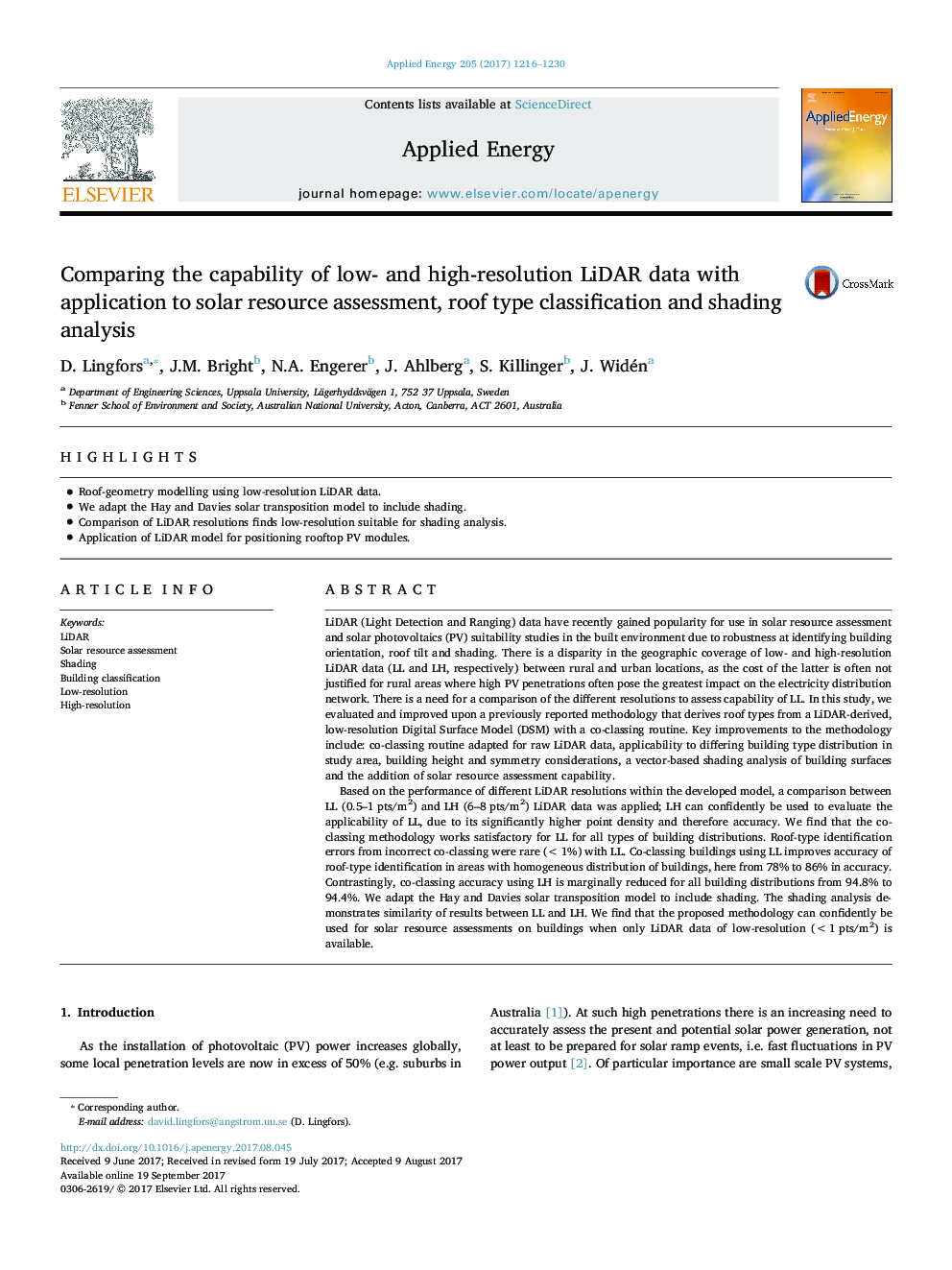| Article ID | Journal | Published Year | Pages | File Type |
|---|---|---|---|---|
| 4915924 | Applied Energy | 2017 | 15 Pages |
Abstract
Based on the performance of different LiDAR resolutions within the developed model, a comparison between LL (0.5-1Â pts/m2) and LH (6-8Â pts/m2) LiDAR data was applied; LH can confidently be used to evaluate the applicability of LL, due to its significantly higher point density and therefore accuracy. We find that the co-classing methodology works satisfactory for LL for all types of building distributions. Roof-type identification errors from incorrect co-classing were rare (<1%) with LL. Co-classing buildings using LL improves accuracy of roof-type identification in areas with homogeneous distribution of buildings, here from 78% to 86% in accuracy. Contrastingly, co-classing accuracy using LH is marginally reduced for all building distributions from 94.8% to 94.4%. We adapt the Hay and Davies solar transposition model to include shading. The shading analysis demonstrates similarity of results between LL and LH. We find that the proposed methodology can confidently be used for solar resource assessments on buildings when only LiDAR data of low-resolution (<1Â pts/m2) is available.
Related Topics
Physical Sciences and Engineering
Energy
Energy Engineering and Power Technology
Authors
D. Lingfors, J.M. Bright, N.A. Engerer, J. Ahlberg, S. Killinger, J. Widén,
